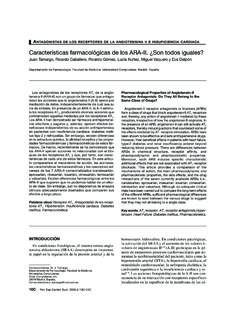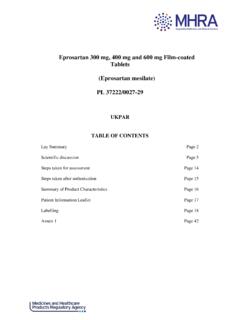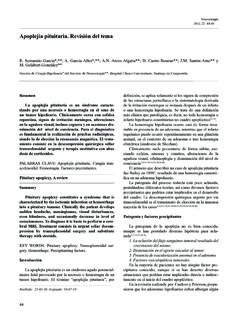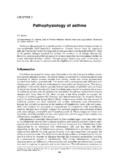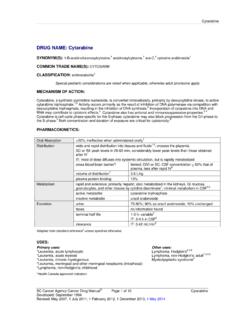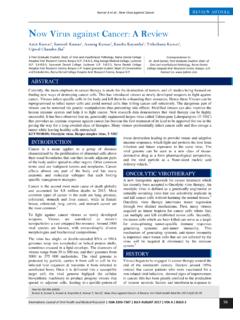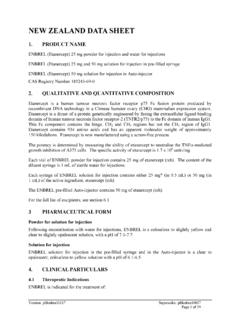Transcription of The EULAR points to consider for use of antirheumatic ...
1 The EULAR points to consider for use ofantirheumatic drugs before pregnancy , and duringpregnancy and lactationCarina G testam Skorpen,1,2,3 Maria Hoeltzenbein,4 Angela Tincani,5 Rebecca Fischer-Betz,6 Elisabeth Elefant,7 Christina Chambers,8 Jos da Silva,9 Catherine Nelson-Piercy,10 Irene Cetin,11 Nathalie Costedoat-Chalumeau,12,13 Radboud Dolhain,14 Frauke F rger,15 Munther Khamashta,16 Guillermo Ruiz-Irastorza,17 Angela Zink,18 Jiri Vencovsky,19 Maurizio Cutolo,20 Nele Caeyers,21 Claudia Zumb hl,22 Monika stensen1,2 Handling editorTore K Kvien Additional material ispublished online only. To viewplease visit the journal online( ).For numbered affiliations seeend of toProfessor Monika stensen,National Service for Pregnancyand Rheumatic Diseases,Department of Rheumatology,Trondheim University Hospital,Trondheim 7006, 30 October 2015 Revised 21 December 2015 Accepted 22 January 2016To cite:G testamSkorpen C, Hoeltzenbein M,Tincani A,et RheumDisPublished Online First:[please includeDay MonthYear] European League Against Rheumatism ( EULAR ) taskforce was established to define points to consider on useof antirheumatic drugs before pregnancy , and duringpregnancy and lactation.
2 Based on a systematic literaturereview and pregnancy exposure data from severalregistries, statements on the compatibility ofantirheumatic drugs during pregnancy and lactation weredeveloped. The level of agreement among experts inregard to statements and propositions of use in clinicalpractice was established by Delphi voting. The task forcedefined 4 overarching principles and 11 points toconsider for use of antirheumatic drugs duringpregnancy and lactation. Compatibility with pregnancyand lactation was found for antimalarials, sulfasalazine,azathioprine, ciclosporin, tacrolimus, colchicine,intravenous immunoglobulin and , mycophenolate mofetil andcyclophosphamide require discontinuation beforeconception due to proven teratogenicity. Insufficientdocumentation in regard to fetal safety implies thediscontinuation of leflunomide, tofacitinib as well asabatacept, rituximab, belimumab, tocilizumab,ustekinumab and anakinra before a planned biologics tumour necrosis factor inhibitors arebest studied and appear reasonably safe withfirst andsecond trimester use.
3 Restrictions in use apply for thefew proven teratogenic drugs and the large proportion ofmedications for which insufficient safety data for thefetus/child are available. Effective drug treatment ofactive inflammatory rheumatic disease is possible withreasonable safety for the fetus/child during pregnancyand lactation. The dissemination of the data to healthprofessionals and patients as well as theirimplementation into clinical practice may help to improvethe management of pregnant and lactating patients withrheumatic new effective therapies and less long-term dis-ability most women with inflammatory rheumaticdiseases (RDs) can contemplate pregnancy thoughsubstantial risk for adverse maternal and fetal out-comes remain particularly in RD with organinvolvement.
4 drug treatment during pregnancymay be required in order to control maternaldisease which itself can be a threat for fetalwell-being and pregnancy outcome. The risk ofleaving active inflammatory RD of the motheruntreated for 9 months must be weighed againstany potential harm through drug exposure of of therapy in a patient planning apregnancy aims to use medications that supportdisease control in the mother and are consideredsafe for the fetus. However, only a limited numberof antirheumatic /immunosuppressive drugs fulfilthese requirements. With the rapidly increasingnumber of medications available for the treatmentof RD, knowledge on safety in pregnancy lagsbehind. A consensus paper on use of antirheumaticdrugs in pregnancy and lactation was published in20061with an update on immunosuppressive drugsin European League Against Rheumatism( EULAR )
5 Task force regarded it timely to collectnew available data from the literature and fromseveral databases, and reach expert consensus ontheir compatibility during pregnancy and lactation,resulting in EULAR points to consider for use ofantirheumatic drugs before pregnancy and duringpregnancy and AND METHODSThe EULAR task force on antirheumatic drugsduring pregnancy and lactation is a multidisciplin-ary committee consisting of 20 members from 10 European countries and the USA (9 rheumatolo-gists, 3 internists, 1 obstetrician, 2 rheumatologist/epidemiologists, 1 specialist in Obstetric Medicine,1 geneticist, 2 patients with RD as patients repre-sentatives and 1 research fellow). The objectivewas to formulate points to consider for the use ofantirheumatic drugs during pregnancy and lacta-tion by identifying and critically evaluating recentliterature and registry data.
6 The task force followedthe procedures outlined in 20043and updated literature reviewAt thefirst meeting, the committee decided on themedications to be included in the systematic litera-ture review (SLR): Non-steroidal anti-inflammatorydrugs (NSAIDs), glucocorticoids, conventionalG testam Skorpen C,et Rheum Dis2016;0:1 16. ARD Online First, published on February 17, 2016 as Article author (or their employer) 2016. Produced by BMJ Publishing Group Ltd (& EULAR ) under licence. on March 5, 2016 - Published by from synthetic DMARDs: methotrexate (MTX), cyclophosphamide,sulfasalazine, leflunomide, antimalarials, azathioprine, colchi-cine, ciclosporin, tacrolimus, mycophenolate mofetil (MMF),intravenous immunoglobulin (IVIG) and targeted syntheticDMARDs: tofacitinib.
7 Biologic DMARDs included were tumournecrosis factor inhibitors (TNFi) (adalimumab, certolizumabpegol, etanercept, golimumab and infliximab), the T cell costi-mulation inhibitor abatacept, the anti-B cell agents rituximaband belimumab, the interleukin (IL)-6 receptor-blocking mono-clonal antibody tocilizumab, and the IL-1 receptor antagonistanakinra. Biosimilars were not included due to lack of data. Twoelectronic searches, one for biologic drugs and a separate searchfor non-biologic drugs were performed in Embase, Medline,PubMed and Cochrane Library from 1 January 2008 to 1 April2015 by a research librarian at the Norwegian University ofScience and Technology University library; Medicine and HealthLibrary, drawing on the Cochrane Musculoskeletal group s strat-egy for searching for all RDs and adjusting the strategy to makeuse of the various database search searches wererestricted to effects in pregnancy and/or perinatal effects, andexcluded reviews (for details see online supplementaryfigureS1).
8 References of articles found were screened for additionalevidence. The search period of 2008 2015 was chosen becauseinclusion of publications in the consensus paper of 2006 endedearly in 2006, and the update of 2008 ended in 2007. As theupdate publication2did not include all non-biologic drugs, anadditional search for the period 2006 2008 was performed for10 drugs; NSAIDs, glucocorticoids, MTX, cyclophosphamide,sulfasalazine, antimalarials, azathioprine, colchicine, ciclosporinand IVIGs. Because of paucity of lactation data, all reports onlactation exposures to antirheumatic drugs published 1970 2015 derived from LactMed, a database in the Toxicology DataNetwork, were were restricted to the English language andincluded prospective and retrospective studies, cohort studies,case-control studies, and case reports.
9 In addition abstracts frommajor international congresses were included. The search wasnot limited to RD, but all indications for a given drug wereincluded (see online supplementaryfigure S1). Results of thedifferent databases were combined and duplicates wereexcluded; issues regarding inclusion or exclusion of articles wereresolved by discussion and consensus between the fellow (CGS)and convenor (M ).RegistriesThe task force obtained access to pregnancy reports from twopharmacovigilance centres and four safety databases frompharmaceutical industries (see online supplementary table S1),and extracted data for all pregnancies with known collection sheetA data collection sheet was constructed to extract relevant dataon exposure during pregnancy and lactation.
10 Included werepatient characteristics, drug dosing, and exposure time beforeand during pregnancy /lactation, concomitant medication, andoccurrence of pregnancy complications (miscarriages and elect-ive terminations, stillbirth, and preterm delivery) or adversechild outcomes. Congenital malformations, birth weight, neo-natal health, infections during the 1st year of life, vaccinationresponses, and follow-up of childrens physical and neurocogni-tive development were also recorded. Reports that did not dis-close the outcome of pregnancy or those for which thetemporal association between drug exposure and onset of preg-nancy could not be determined were excluded from , incomplete reports on breastfeeding exposures outcomesWe defined as the primary outcome major congenital malforma-tions in live-born children or aborted fetuses.
